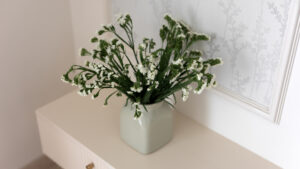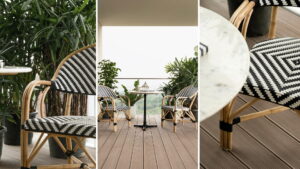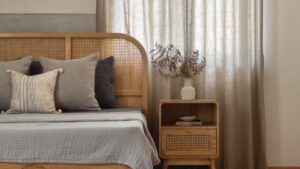When it comes to interior design, colour plays a pivotal role in creating the desired ambience and setting the mood of a space. The use of colour can evoke emotions, enhance functionality, and even influence our behaviour. This article delves into the fascinating world of colour psychology in interior design and provides insights into choosing the right hues for your home.
Understanding Colour Psychology
Colour psychology is the study of how different colours can impact our thoughts, emotions, and behaviours. It explores how various hues can stimulate our senses, influence our perceptions, and even affect our moods. When applied effectively in interior design, colour psychology can transform a room into a space that’s not only visually appealing but also conducive to the intended purpose.
Choosing Colours for Different Rooms
The Living Room: Welcoming and Social
The living room is often the heart of a home, where family and friends gather for social activities. To create a warm and welcoming atmosphere, consider using warm colours like shades of red, orange, and yellow. These hues can promote conversation and create a cosy ambience. If you want to add a touch of elegance, you can complement warm colours with neutral tones like beige or cream.
The Bedroom: Relaxation and Tranquility
For the bedroom, it’s essential to create a serene and calming environment. Cool colours like shades of blue, green, or lavender are ideal choices for modern bedroom designs. These colours are known for their soothing properties and can promote relaxation, making them perfect for a space dedicated to rest and rejuvenation. You can also experiment with soft pastels for a gentle and airy feel.
The Kitchen: Energising and Appetizing
The kitchen is a space where energy and appetite play a significant role. Bright and vibrant colours like red, yellow, and orange can stimulate appetite and create an energetic atmosphere. However, it’s essential to strike a balance by using these colours as accents or in moderation, as they can become overwhelming if overused. White or light neutral tones can also work well in kitchens, creating a clean and spacious look.
The Home Office: Productivity and Focus
For a home office or workspace, it’s crucial to choose colours that enhance productivity and concentration. Earthy tones like greens and browns can create a sense of stability and promote focus. You can also incorporate cool, muted colours like grey or soft blues for a calming effect. It’s essential to avoid overly distracting or intense colours that can hinder your ability to work efficiently.
The Bathroom: Cleanliness and Relaxation
In the bathroom, cleanliness and relaxation are key. Light and neutral colours like whites, light greys, and soft blues create a clean and fresh ambience. These colours also enhance the perception of space, making smaller bathrooms feel more open. Consider adding pops of colour through accessories like towels and shower curtains for a touch of personality.
Using Colour Accents
While choosing the main colour scheme for each room is essential, don’t forget about the power of colour accents. These can be introduced through furniture, artwork, cushions, and decorative items. Colour accents allow you to experiment with bolder or contrasting colours without overwhelming the entire space. They can add personality and visual interest to your home’s interior design.
Balancing Warm and Cool Colours
Another important aspect of colour psychology in interior design is finding the right balance between warm and cool colours. Warm colours (reds, oranges, yellows) are energetic and passionate, while cool colours (blues, greens, purples) are calming and serene. By using a combination of both warm and cool colours, you can create a harmonious and balanced atmosphere in your home.
Consider Personal Preferences
Ultimately, your personal preferences should play a significant role in choosing colours for your home. After all, you’re the one who will be living in space. Think about colours that make you feel comfortable and happy. If you have a favourite colour, find ways to incorporate it into your design while keeping in mind its psychological impact.
Colour psychology is a powerful tool in interior design, allowing you to create spaces that not only look beautiful but also evoke the desired emotions and behaviours. By understanding the psychological impact of different colours and carefully choosing hues for each room, you can transform your home into a place that reflects your personality and meets your lifestyle needs. So, embrace the world of colour and let it guide you in creating a harmonious and inviting living environment.
As interior designers, we understand the significance of colour in creating spaces that resonate with your vision and purpose. Whether it’s room paint design or crafting a Colourful House Interior, we’re here to help you bring your ideas to life. Contact our team of experienced house designers to turn your dream space into a reality.



